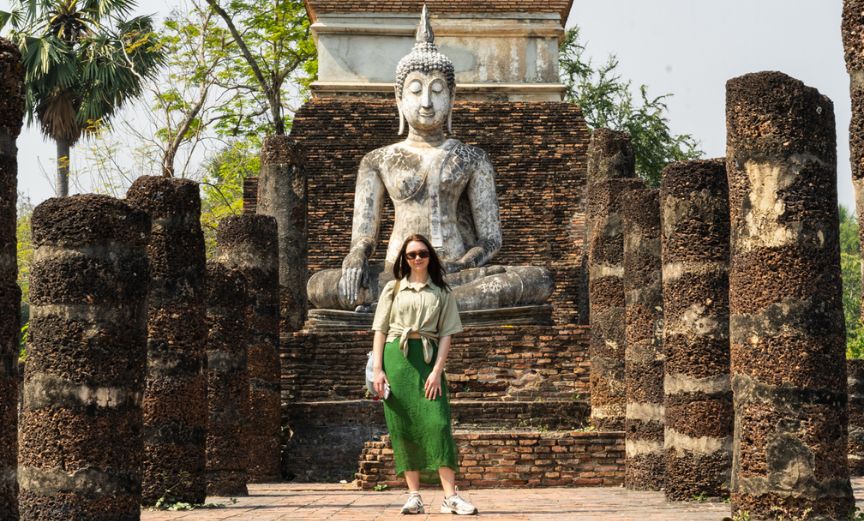In our survey, we discovered:
- 76% of Gen Z and 68% of millennials consume reality TV today
- ‘Authenticity’ ranks higher than ‘attractive’, ‘stylish’ and ‘glamorous’ in influence over purchasing decisions
- More than two-thirds of Gen Z audiences are likely to fork out for clothing worn by stars
- Heavily photoshopped content puts most people off buying a product
Whether it’s a guilty pleasure or an hour of a hectic day where you can finally zone out – reality TV is going nowhere. But if you’re thinking of tapping into reality TV fans with influencers from one of the big-draw shows, you need to think about who is best to represent your brand and engage your audience.
Hashtag, looks aren’t everything.
Most people in our study said they’d be more swayed to buy a product if the star selling it came across as “authentic” (34%) rather than stylish (22%) or glamorous (12%).
What’s more, the most-valued characteristic for all age groups was “funny or engaging”, followed by “down to earth or authentic”.
The research also suggested that looks really don’t count for much when it comes to sustaining long-lasting relationships with audiences. Factors such as “if they were aspirational or posted inspirational content” and “if they were glamorous or lived a glamorous lifestyle’’ were much more influential than looks.
Our study shows is people relate to people – flaws and all – and that unfiltered ‘realness’ is what brands need to look out for when choosing who they collaborate. Working with authentic influencers could significantly boost your chances of making a sale – and also boost your brand sentiment.
What characteristics would put people off following an reality TV star?
We asked participants about qualities that discourage them from following reality TV stars on social media. It comes as no surprise that ‘’heavily photoshopped images/videos’’ is a big red flag for most people, with the ‘’posting of controversial opinions’’ coming in at a close second.
With Instagram placing a ban on filtered ads, it’s encouraging that some action is being taken to curtail the proliferation of unrealistic beauty standards on social media. Of course this doesn’t stop influencers from sharing heavily filtered images on their everyday posts and stories. Anyone with a smart phone can erase a blemish at the tap of the finger – warping user perceptions of reality.
Brands should look at an influencers’ content holistically. If they’re willing to show their less glamorous side (even if it puts them in a vulnerable position for trolling), as well as have a sense of humour and a relatable personality – you know they’re worth the investment.
How does reality TV influence millennial and Gen Z spending habits?
With 76% of Gen Z, 68% of Millennials, and 50% of females from every age group consuming reality TV, shows like Love Island are far more than a seasonal guilty pleasure. They carry significant commercial influence.
Our insights revealed that millennials are most engaged with the social media presence of stars, with 70% following at least one contestant.
When it comes to products featured on reality TV more generally, millennials are also the most active spenders on makeup, skincare, personal tech, accessories, nightclubs, restaurants, and apps. This indicates some seriously strong potential for brands across a variety of sectors looking to work with the stars. The opportunities for creating campaigns are endless.
This takes us on to the younger, most socially active, demographic. Also known as today’s ‘digital natives’, Gen Z came out as the most likely to:
- Buy clothing worn by stars
- Use a discount code provided by a reality star
- Visit holiday destinations featured on the shows
They’re also the second most likely purchasers (after millennials) in every other spending category. It’s safe to say there’s plenty of scope for attracting this digital savvy audience. Once you have built that crucial consumer trust with Gen Z, it can only continue to gain value as their spending power increases.
How do consumers engage with reality TV stars?
Instagram wins the hearts of both Gen Z (79%) and millennials (70%) as the platform of choice to engage with reality TV stars. TikTok creeps in at second place, engaging almost half of the Gen Z audience – confirming the significance of video content in hooking in potential customers.
Across all age groups surveyed, people follow an average of 17 reality TV stars on social media. Most respondents said that they begin following a star after watching more than one episode, suggesting it’s a considered decision. With the importance of authenticity, it takes more than an aesthetically pleasing feed to make audiences hit ‘follow’.
Why should brands care about reality TV?
With thousands of potential matches to choose from, we understand choosing the right influencer to align with your brand’s reputation can be a tricky task – especially with so many emerging into the market through summer reality TV shows like Love Island. Our data revealed some surprising insights into how reality TV affects user behaviour. If you want help navigating through your influencer marketing or don’t know where to begin, drop us a message and we’ll be happy to help.








